|
|
Post by sɐǝpı ɟo uoıʇɐɹǝpǝɟ on May 17, 2016 23:01:51 GMT
thought it could be interesting to hear the backstories on well known pictures.... historical, street art, your brother-in-law's wacky wedding I'll start with this one we all know:  the Mona Lisa was hanging up in the Carlton Arms lobby (still is). they took it outside, found a random homeless guy, and made him walk back and forth in front of that same spot for about 30 minutes until they were sure they got the right picture. the guy started to get grumpy towards the end of it  |
|
|
|
Post by jkrx on May 17, 2016 23:27:44 GMT
Great idea, but the picture doesn't show for me  |
|
|
|
Post by sɐǝpı ɟo uoıʇɐɹǝpǝɟ on May 17, 2016 23:35:59 GMT
Great idea, but the picture doesn't show for me  no? here's a direct link: ia.media-imdb.com/images/M/MV5BMjE2NTg1NDM4Ml5BMl5BanBnXkFtZTcwMzMxOTkyMw@@._V1_SX640_SY720_.jpg |
|
|
|
Post by jkrx on May 17, 2016 23:39:48 GMT
it's probably just me, but that link doesn't show anything to me either
|
|
|
|
Post by jkrx on May 17, 2016 23:40:38 GMT
wait, delete that - it shows now
|
|
|
|
Post by jkrx on May 17, 2016 23:41:51 GMT
and the first post shows too now - maybe i'm too fast for the internet?
sorry - i should have just waited
|
|
|
|
Post by sɐǝpı ɟo uoıʇɐɹǝpǝɟ on May 18, 2016 0:30:51 GMT
sorry but another Banksy 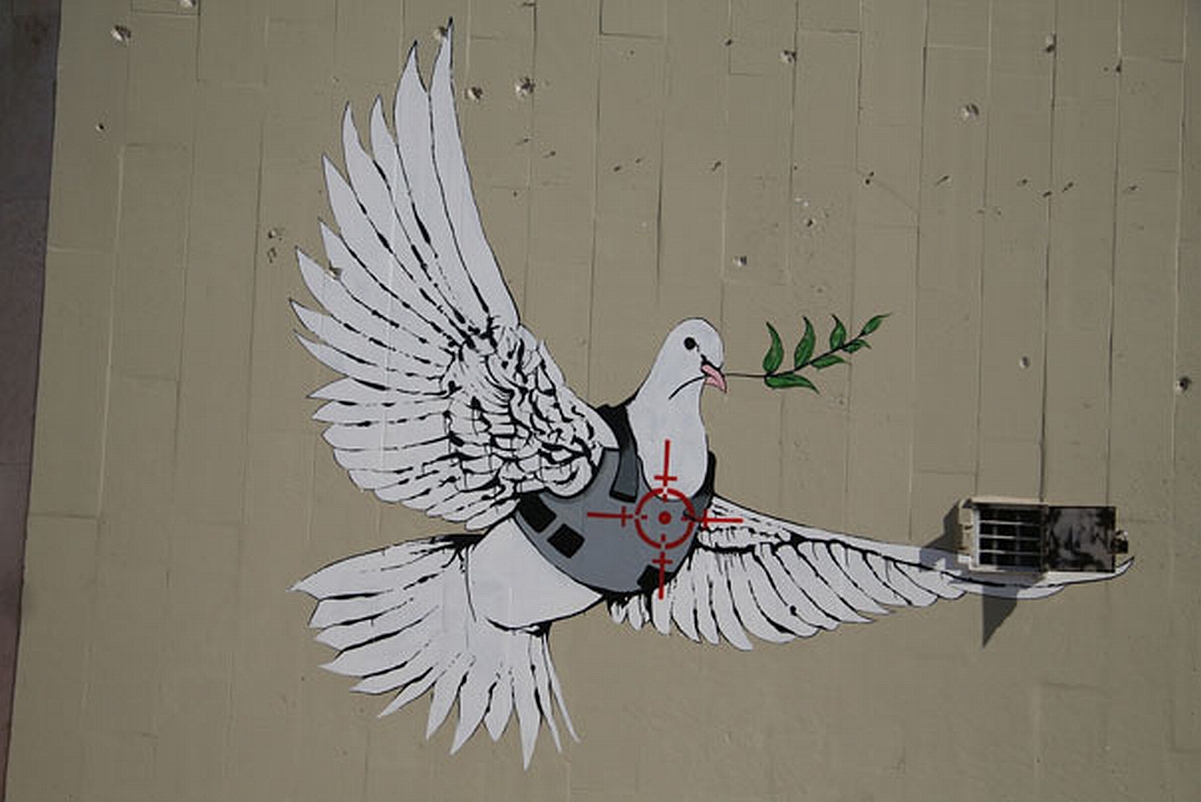 "This wall marks the spot where over 40 people were killed during the first Intafada (the little holes along the top are from bullets). While Banksy was painting it a lot of people came over, some to shake his hand and others telling him to go away. Eventually the local MP was called out to diffuse the eighty-strong crowd that had built up (by which time Banksy had left and the piece was completed by the local kids)." |
|
|
|
Post by IggyWiggy on May 18, 2016 8:18:08 GMT
 The central character in an incredible viral photograph of New Year’s Eve celebrations in Manchester has told the M.E.N: “I can’t remember being there”. Mike Deveney, 47, became an internet sensation after he was captured sprawled in the street reaching for his bottle of lager outside the Arndale centre, as police dealt with another man nearby. Mike, a dad from Newton Heath, had been for a night at Mambo’s cocktail bar near the Printworks, but says he can’t recall how he ended up on the road. He only remembers speaking to friend Hannah Kirby around 20 minutes later and going back to her dad’s house in Miles Platting before making his way home. When asked about the picture being seen by millions of people across the world, Mike told the M.E.N: “I’m not really bothered about the photo, I just felt a bit daft. I heard about it about two days later.” He added: “I remember nothing at all (about being on the floor). I remember getting up about 20 minutes later and going home with Hannah. "We had been at the Gluepot, the pub up in Newton Heath, and then we went to Mambo’s next to the Printworks.” Hannah Kirby, who is also in the picture, earlier revealed that Mike had been knocked over during a scuffle involving police and another reveller. Mike says he kept a low profile on New Year’s Day and didn’t hear about the photograph until it had gone viral on Saturday. The image, taken by freelance photographer Joel Goodman, was seen by people as far away as Australia and the US. Photoshoppers had a field day with the street scene on Twitter, superimposing Mike on Michelangelo’s The Creation of Adam. www.manchestereveningnews.co.uk/news/greater-manchester-news/manchester-new-years-eve-picture-10688035 |
|
|
|
Post by dashboll on May 18, 2016 12:20:30 GMT
I'm guessing the gluepot is a thing and not a place?
|
|
|
|
Post by ouroboros on May 18, 2016 14:52:46 GMT
if you want some fodder for posting, check out Kevin Carters stuff and backstory to the pictures - yes, him who the manics writ about. some of it brings me to tears. 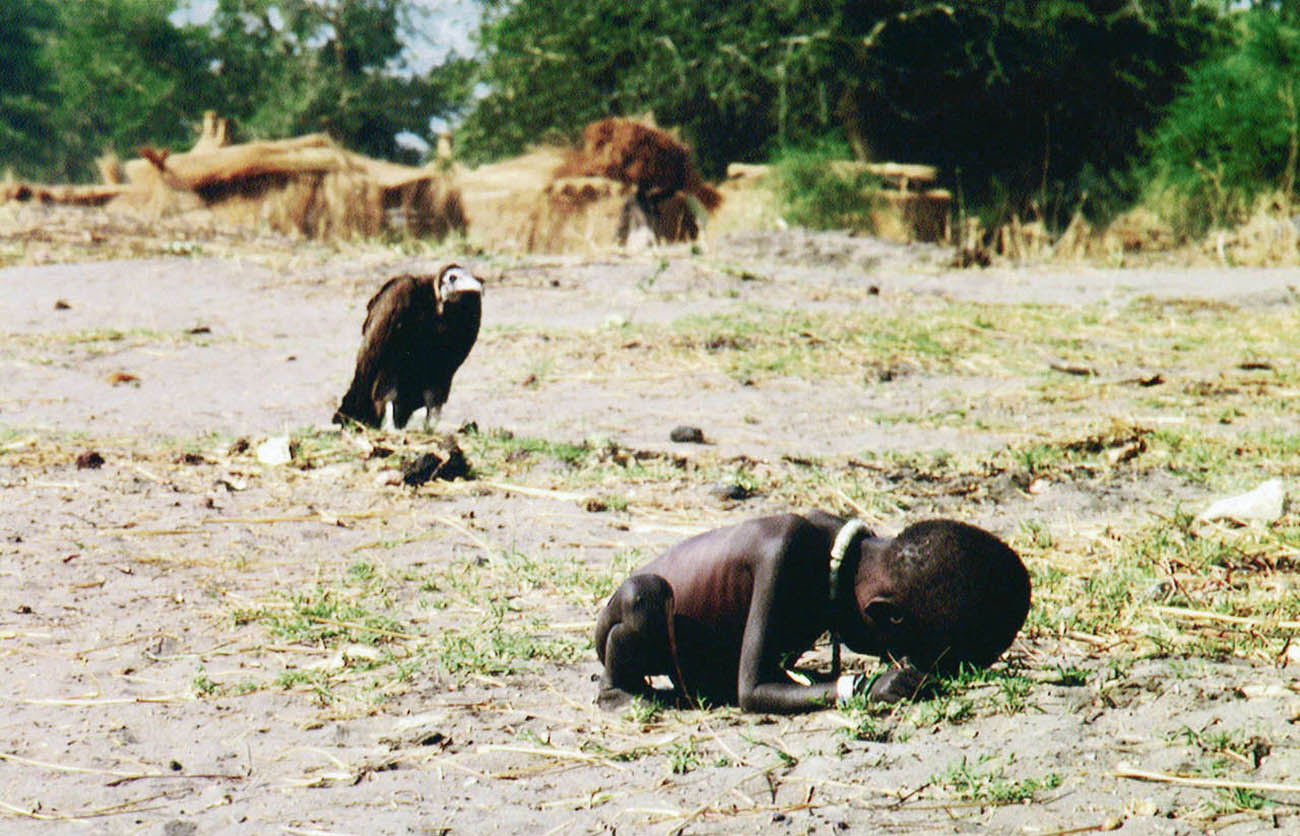 |
|
|
|
Post by ouroboros on May 18, 2016 15:06:15 GMT
|
|
|
|
Post by sɐǝpı ɟo uoıʇɐɹǝpǝɟ on May 19, 2016 12:24:56 GMT
 on 9/11 the Chaplain of the NYFD, Father Judge, went to the lobby of one of the towers to pray for the firefighters responding. when the first tower collapsed, he was killed by debris. He was being carried out when this photo was taken. they laid his body on the altar of a nearby church a lot of this can be seen in the documentary 9/11 by the Naudet brothers (an amazing film, if you haven't seen it) |
|
|
|
Post by IggyWiggy on May 25, 2016 17:52:35 GMT
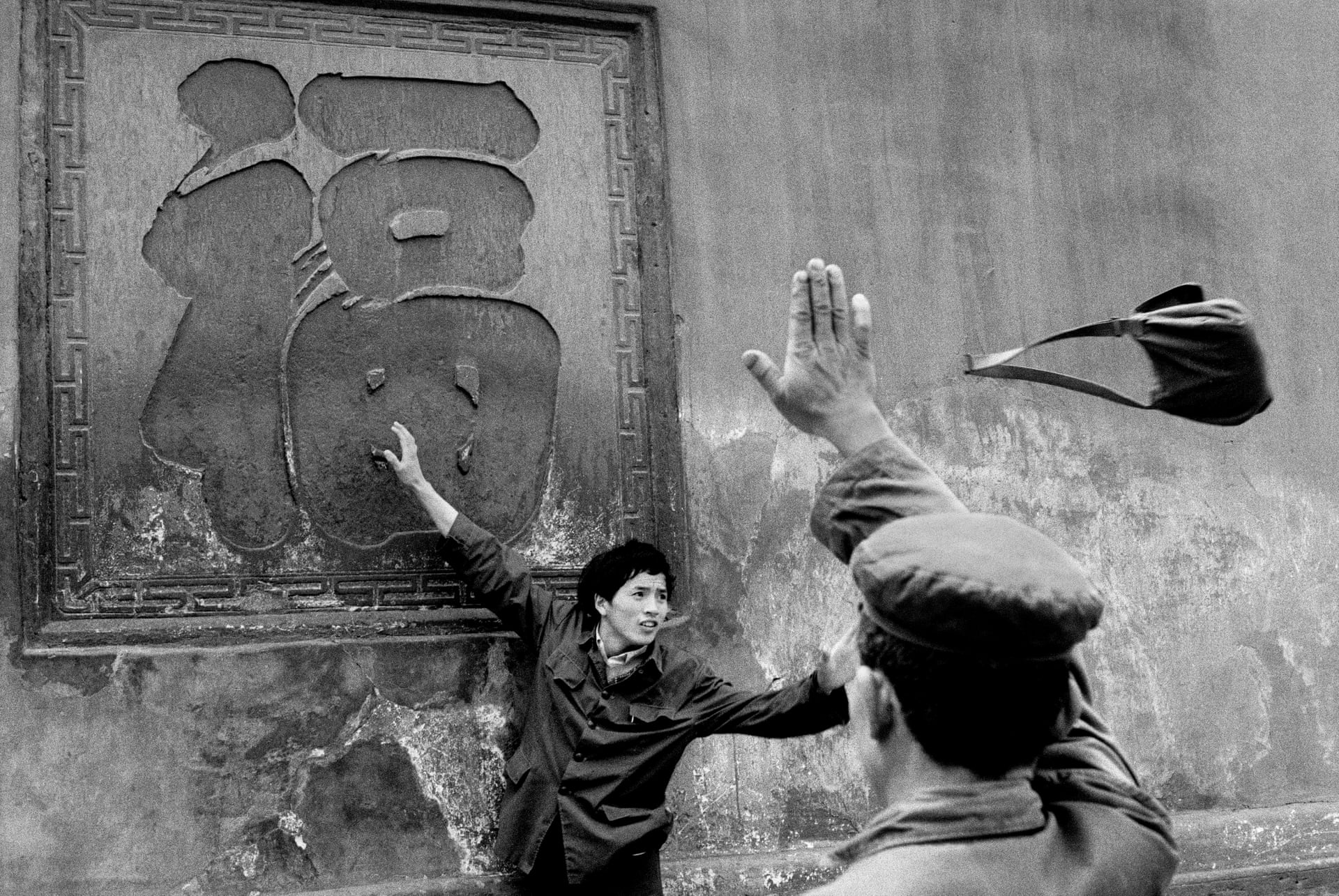 'This photo is an enigma. Even I can’t say for sure what’s happening. I didn’t know what I had taken at the time. It was only afterwards, when I developed the film, that I saw the handbag. It was April 1984 and I was on assignment in China, which was just opening up to foreigners. I had no particular commission, though: I could shoot whatever I wanted. On this day, I was visiting a monastery at Xindu in the Sichuan province. There was a symbol on the wall that meant “happiness”. The place was full of Chinese tourists and the tradition was to stand 20 metres from the sign, then walk towards it with eyes closed and try to touch the centre of the four raised points. As a photographer, I have always been interested in gestures – I was once described as someone who made arms dance. And now I found myself in front of this extraordinary ballet: a young man who has just touched the sign and a second, in a hat, approaching with his hand out. I remember the sensation of something moving, but I really don’t remember the handbag.' - Guy Le Querrec www.theguardian.com/artanddesign/2016/may/25/guy-le-querrecs-best-photograph-flying-handbags-at-a-monastery-in-china |
|
|
|
Post by sɐǝpı ɟo uoıʇɐɹǝpǝɟ on May 27, 2016 13:06:40 GMT
 "One of the most impressive of these projects was conceived in the summer of 1986 for the Statue of Liberty’s centennial celebration. In collaboration with the youth organization CityKids, Haring created a 10-story-high banner depicting Lady Liberty surrounded by a line of joyfully dancing figures. From afar, the banner-hung from a building in Battery Park City-was standard Haring. A close look, however, revealed the handiwork of 1,000 at-risk high school students who participated in a mass creative session sprawled out on the floor of the Jacob Javits Center. Similar events took place in Philadelphia and Chicago-occasions that had Haring marveling at the diversity of expression contained within the final result. “They do this with every kind of painting technique imaginable,” enthused Haring of the Chicago event-a 520-foot mural created with 300 public high school students. “All these kids are a wonderful mixture of every possible ethnic and cultural background.”" ***on a personal note - I recently met with a woman who helped set up the project... She said Haring couldn't have been nicer, making pins, t-shirts, and drawings on the spot for all of the kids and everyone who was helping out at the Javits Center..... glad to know he was such a genuine dude |
|
|
|
Post by sɐǝpı ɟo uoıʇɐɹǝpǝɟ on Jun 16, 2016 16:05:07 GMT
|
|
|
|
Post by norbok on Jun 16, 2016 18:45:03 GMT
historical ... ?  en.wikipedia.org/wiki/Armenian_Genocide en.wikipedia.org/wiki/Armenian_Genocide------------------------------------------------------- and opposite (reverse, inverse, contrary, converse, inverted...180 degrees rotation...  ) )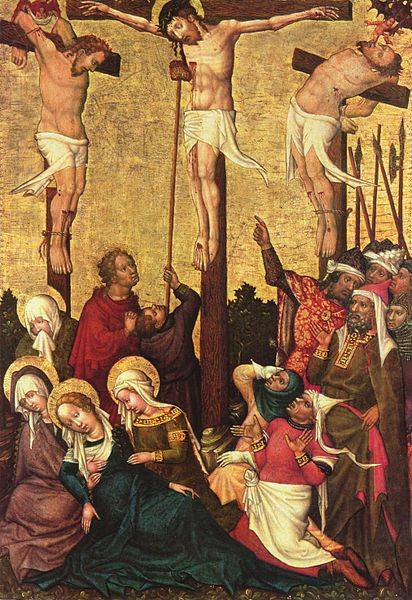 |
|
|
|
Post by sɐǝpı ɟo uoıʇɐɹǝpǝɟ on Sept 21, 2017 11:51:02 GMT
|
|
|
|
Post by Still Hate Thatcher on Sept 21, 2017 13:01:06 GMT
|
|
|
|
Post by IggyWiggy on Oct 24, 2017 17:06:01 GMT
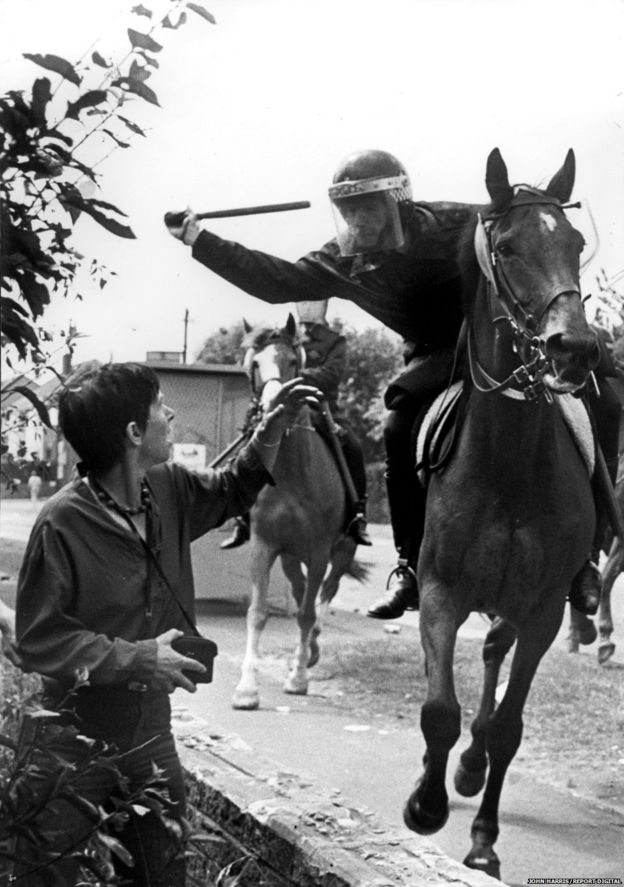 Woman about to be truncheoned round the head by a mounted police officer at Orgreave in June 1984. Woman about to be truncheoned round the head by a mounted police officer at Orgreave in June 1984.Lesley Boulton is the subject of a famous photograph by John Harris who spent a year on the picket lines photographing key moments of the Miners Strike. Lesley is the woman about to be hit on the head by a mounted police officer at Orgreave in June 1984. She was a member of Women Against Pit Closures and she went along to Orgreave on 18th June 1984, the day that became known as the Battle of Orgreave, a bloody battle between pickets and police. In John Harris's iconic photograph, Lesley is holding a camera and cowering from a mounted policeman with a baton raised - about to crack her on the head. Despite the photo's arresting qualities and the fact it now has iconic status, a report by the Campaign for Press and Broadcasting Freedom said it was only published in one of 17 national newspapers at the time - which they say suggests reporting bias. But what happened next to Lesley? At the time of the strike Lesley had teenage children. She now lives in Pitsmoor, Sheffield and has grandchildren. In Lesley's own words "The photograph shows a mounted police officer with baton raised about to hit me on the head. "It was a long time ago now but never forgotten. It was at Orgreave on the outskirts of Sheffield. There was a coking plant there. "We knew there was going to be a picket that morning - 18th June 1984. Some people I knew from the PoliceWatch organisation were going along and a friend of mine from Women Against Pit Closures and I decided that we'd go down. So I thought I'd go and take some photographs of what was going on and just monitor the situation. "It was an absolutely beautiful June day. My friend Audrey and I arrived at about 9.30am. It was really very quiet at the time, there was a big field in front of the coking plant with a huge line of police across the bottom. Up a little rise on the right was a squadron of police horses. "There was a road going down the side of the field on the left. Just on the road bit was a cluster of miners who were, shall we say, "exchanging remarks" with the police. "But basically people - men - were sitting or standing around in small groups, there was really not a lot going on. "A lot of the men had taken their t-shirts off and stuffed them in their back pockets. "It certainly wasn't the sort of thing you'd do if you were planning to attack a seriously armed police force - they had their long shields, all their protective gear on, batons, helmets on. You don't confront police like that in nothing but a pair of jeans and trainers. "So I say quite categorically that there was no intention of the miners to attack the police. I myself, with a lot of other miners, was forced to run away and take refuge." "There had been some stuff going off before I arrived but I don't know exactly what happened. A few stones going over - nothing major at all. There was a standoff for a while - a few stones went over, and then there was a massive cavalry charge up into the village. "The ranks of the police were several deep. They opened up and the police did a series of cavalry charges and pushed us back into the village and then blockades were set up - a police blockade at one side of the bridge and a miners' blockade at the other side of the bridge. "There's a T-junction there and a bus stop. I was attending to a man who was on the ground and seemed to have some chest injuries. "I was standing trying to attract the attention of a police officer in the road to get him an ambulance. I didn't know how serious it was but I thought it warranted some medical attention. "As I stood up to attract this policeman's attention, this officer on a police horse just bore down on me." This was the very moment that John Harris took the picture of Lesley. "Fortunately for me there was someone standing behind me who was also with the injured miner, who just yanked me out of the way. The photographer John Harris was using a motor drive and I've seen not just the famous photograph but the subsequent picture which shows the baton going down very close to me. "I felt it go past me. I was just missed by the skin of my teeth really. "That part was very, very disturbing. The police were actually having a very good time, they were enjoying this huge exercise of brutal authority, so I found that very disturbing. "You got the sense that they were just out of control and quite a few miners were injured on the day. One young lad that I took a photo of had his leg broken. There were quite a lot of injuries." GS: If the policeman's baton had hit you, would it probably have knocked you out? LB: "Oh absolutely, without equivocation." GS: Do you think the policeman thought you were a miner? LB: "I don't know, I was holding a camera as I was trying to attract attention and I don't know what he thought really. The police were completely carried away. Some of them were laughing and obviously enjoying this exercise of their power. GS: Did it put you off? LB: "No, it didn't put me off, it made me more determined to go. We were sort of getting used to the fact that Sheffield and South Yorkshire were a police state, in so far as if you wanted to go down the M1 to Nottinghamshire from Sheffield there would be constant convoys of police. "At every slip road between here and Nottingham there were police roadblocks at the end of the slip roads and the police would decide whether you were allowed to go on or not." news.bbc.co.uk/local/sheffield/hi/people_and_places/history/newsid_8217000/8217946.stm |
|
|
|
Post by smalls on Oct 24, 2017 17:22:35 GMT
Many thanks, a great read
|
|
|
|
Post by broke on Oct 25, 2017 9:32:06 GMT
i would highly recommend this series, really informative and interesting. its a 10-parter on BBC4 called the Vietnam war. ]  |
|
|
|
Post by IggyWiggy on Oct 29, 2017 12:43:55 GMT
 Twins Renate and Innes Spanier gaze out of a porthole of the liner 'St Louis’, by Gerry Cranham, taken in Antwerp. In 1939, captain Gustav Schröder tried to find help relocating 908 Jewish refugees who were fleeing Germany and the Nazi regime by transporting them to North America aboard the MS St. Louis. They made it across the Atlantic only to be denied entry to Cuba, the U.S. and Canada. Forced to return to Europe, some of them were able to find refuge in various countries. Historians estimate that 254 of them ultimately died in concentration camps during World War II. |
|
|
|
Post by chainsaw on Oct 29, 2017 13:46:22 GMT
Doesn't it make you wonder about the people trying to leave countries with extremist religious problems.
How different are they to those fleeing nazi oppression 80 years ago?
|
|
|
|
Post by dot on Oct 30, 2017 11:58:26 GMT
interesting read.
thanks to those who have chipped in so far.
|
|
|
|
Post by IggyWiggy on Nov 5, 2017 18:27:24 GMT
 Spassky (left) Fischer (right) Photo by Harry Benson The 1972, World Championship. Boris Spassky of the USSR vs Bobby Fischer of the USA in a match held in Reykjavík, Iceland, that was widely publicized as a Cold War confrontation. The match attracted more worldwide interest than any chess match before or since. The expectations on Spassky were enormous because, for the Soviets, chess was part of the political system. While Fischer was often famously critical of his home country ("Americans want to plunk in front of a TV and don't want to open a book ..."), he too carried the burden of expectation because of the political significance of the match.No American had achieved the world championship since the first champion, Wilhelm Steinitz, became a naturalized American citizen in 1888. The excitement surrounding the match was such that it was called the Match of the Century. The first game was played on July 11, 1972. The last game (the 21st) began on August 31, was adjourned after 40 moves, and Spassky resigned the next day without resuming play. Fischer won the match 12½–8½, becoming the eleventh undisputed World Champion. In his later years, Fischer lived in Hungary, Germany, the Philippines, Japan, and Iceland. During this time he made increasingly anti-American and antisemitic statements, despite his Jewish ancestry. He publicly expressed criticism of the U.S., stating his belief that, “Nobody has single-handedly done more for the U.S. than me. But now I’m not useful anymore, you see. The Cold War is over and now they want to wipe me out, get everything I have, put me into prison.” After his U.S. passport was revoked over the Yugoslavia sanctions issue, he was detained by Japanese authorities for nine months in 2004 and 2005 under threat of deportation. In February 2005, Iceland granted him right of residence as a “stateless” alien and issued him a passport. When Japan refused to release him on that basis, Iceland’s parliament voted in March 2005 to give him full citizenship. The Japanese authorities then released him to Iceland, where he lived until his death in 2008. |
|



